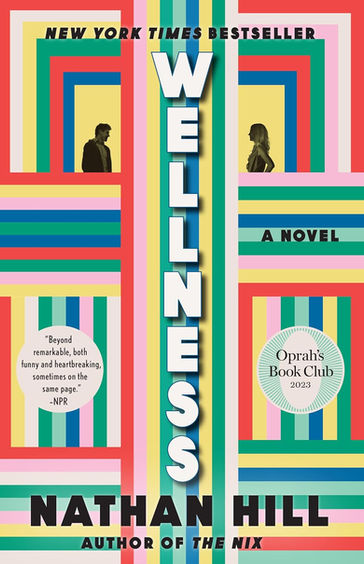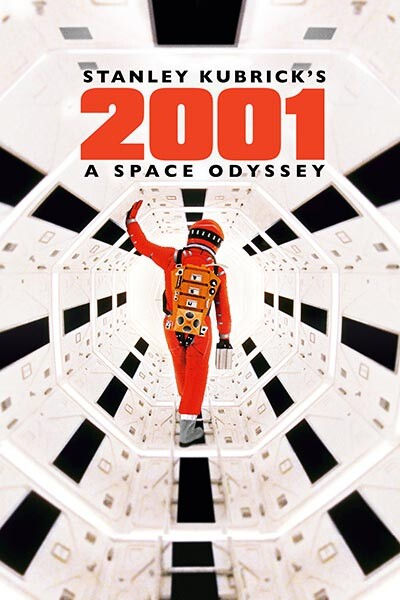
How Kasra Farahani Designed Marvel’s Fantastic Four World
Discover how Marvel’s Kasra Farahani designed Fantastic Four’s retro-futuristic world in this Minded Podcast - your go-to art and design podcast
Kasra explains how he designed the retro-futuristic world of Marvel’s Fantastic Four
Behind the scenes of building Times Square and Reed Richards’ 360° lab set
Why physical sets still matter in the age of CGI and virtual production
How architectural realism and retro fantasy merge in Marvel worldbuilding
Managing large-scale productions on tight timelines with creative precision
Kasra’s philosophy on emotional design and immersive storytelling
The future of production design in a world of AI and generative tools
His book, film, and skill recommendations for creative professionals
Cultural Stack
Each week on the MINDED podcast, creative leaders share the books, films, and music that inspire them.
Stay in the Conversation
Subscribe to the MINDED Podcast Newsletter
Unlock exclusive insights, early-access episodes, and the ideas shaping the future of art, design & culture—delivered straight to your inbox every week.
FAQ
Who was the production designer for Marvel’s new Fantastic Four movie?
Kasra Farahani led the production design for Marvel’s Fantastic Four, crafting a retro-futuristic world that blends 1960s realism with bold technological imagination.
How does production design shape Marvel movies like Fantastic Four and Loki?
Production designer Kasra Farahani shares how immersive sets, emotional storytelling, and architectural grounding create the cinematic look of Marvel’s iconic worlds.
What role does AI play in the future of film and production design?
Kasra Farahani believes AI may help with repetitive tasks, but true innovation and cinematic excellence still come from human creativity and forward-thinking design.
Why is retro-futurism used in the Fantastic Four movie?
The retro-futuristic aesthetic reflects an alternate Marvel timeline shaped by Reed Richards’ inventions—balancing nostalgia, optimism, and speculative design.

Transcript
Yuri Xavier:
Welcome to Minded. How are you?
Kasra Farahani:
Very well, thank you. How are you doing?
Yuri Xavier:
First off—congratulations. The new Fantastic Four has been a huge success, and everyone keeps mentioning the production design. You must be feeling pretty good right now.
Kasra Farahani:
Absolutely. I feel very good that my team—and all the brilliant, talented people in the art department, set decoration, props, construction, and special effects—are being recognized for the world we created together.
Yuri Xavier:
Do you allow yourself to enjoy that moment, or are you already onto the next thing?
Kasra Farahani:
Honestly, probably not as much as I should. These projects are intense. You're fully immersed. And when it's over, it's hard to see the final product—you mostly see the things you wish you'd done differently. That's why it’s meaningful to hear that fans are happy. That helps me take a moment to reflect.
Yuri Xavier:
Were you always like this as a kid? Wanting more time, more refinement?
Kasra Farahani:
I think that mindset really solidified during my time at ArtCenter College of Design here in Southern California. It’s a very intensive school. That perfectionism and attention to micro-detail comes from that. Even on set, I’ll fill drawers with items the camera will never see—because it’s not finished unless it feels real.
Yuri Xavier:
You’ve designed some of Marvel's most iconic spaces—Loki, Fantastic Four. What’s your process from script to screen?
Kasra Farahani:
It starts with deeply absorbing the script and understanding the story priorities. Then comes translating those into environments that can be filmed—deciding what’s a set, what’s VFX, what’s location. For Fantastic Four, we built sets like Reed’s lab, the Baxter apartment, and a full-scale Times Square. That gave actors and directors freedom—but those sets are expensive. So we looked at how to consolidate scenes into shared environments to justify those builds.
Yuri Xavier:
So much of that worldbuilding is invisible to the audience. How much of your role is design vs. operations?
Kasra Farahani:
If you’re lucky, about two-thirds design, one-third logistics. I had great support—my supervising art director Nick Gottschalk and the team helped me focus on the creative. I only had to step in when major problems needed conceptual solutions.
Yuri Xavier:
Fantastic Four: First Steps looks unlike any other Marvel film. What inspired that retro-futuristic aesthetic?
Kasra Farahani:
It’s grounded in optimism. We drew from industrial design from the 1930s to 1960s—the streamline era, the jet age. In this alternate timeline, Reed Richards is born in 1930. By 1950, he’s changing the world. So anything in New York built after 1950 reflects his influence—flying cars, monorails, walking robots. But it’s only one-third retro-futuristic; the rest is real New York. That balance keeps it grounded.
Yuri Xavier:
Do you think that visual language will influence the wider MCU?
Kasra Farahani:
Not really. Loki’s TVA was its own world. Fantastic Four is the same—its own corner. I know Kevin Feige mentioned that some sets might appear in Avengers: Doomsday, which started a rumor that I’m designing that film—I'm not. But generally, these were standalone visual worlds.
Yuri Xavier:
If you could design another cinematic universe—Star Wars, Dune, Blade Runner—which would you choose?
Kasra Farahani:
I admire them all, but Dune stands out. What Denis Villeneuve and Patrice Vermette have done is masterful—fusing sci-fi scale with timeless, architectural elegance. I think it will age beautifully.
Yuri Xavier:
Your work feels emotional—almost like we've seen it before. Where does that sensibility come from?
Kasra Farahani:
I try to ground everything in real architectural research—materials, proportions, detail. I balance fantastical with familiar. It’s not a one-size-fits-all approach, but it worked well for Loki and Fantastic Four.
Yuri Xavier:
Was there a moment that really challenged you during Fantastic Four?
Kasra Farahani:
Many. We only had 13 months from script to wrap. In that time, we built Times Square, two Fantasticars, the lab, the apartment, and more. And we had to deliver most of our big sets early in the shoot, which meant building multiple massive environments at once. On top of that, my second child was born in the first month of the job—so it was intense on every level.
Yuri Xavier:
We can’t talk about design today without asking about AI. What’s your view?
Kasra Farahani:
AI is a powerful tool, but it’s still ethically complicated. I’m curious about tools trained on owned data, like Adobe’s model. But overall, I don’t think AI will replace innovation. It’s backward-looking. It may raise the floor, but it won’t raise the ceiling. It can help generate B-level images—but not A+ design. That still comes from humans.
Yuri Xavier:
Before you go, can you give us some quick recommendations? A film, a book, a skill to learn—and who we should invite next?
Kasra Farahani:
For film: 2001: A Space Odyssey—a visual lighthouse. And Barbarian—super original. For books: Wellness and The Nix by Nathan Hill. Skill-wise: learn something outside your field. I stopped doing concept art to study screenwriting and directing. That risk changed how I design. Finally—bring on Denis Villeneuve or Matt Shakman!
Yuri Xavier:
Working on it! Kasra, thank you. Incredible conversation and congratulations again.
Kasra Farahani:
Thank you, Yuri. It was a pleasure.

Kasra Farahani
Production Designer, Marvel Studios' Fantastic Four / Loki
Kasra Farahani is an Iranian-born, Los Angeles-based director, production designer, writer, and concept artist known for his work on numerous films and television series, particularly in the Marvel Cinematic Universe.
MINDED Podcast
The Leading Platform in Art, Design, Culture and Innovation.
MINDED is a global platform at the intersection of art, design, culture, and tech-driven innovation. Hosted by Yuri Xavier, MINDED explores how today’s leading architects, artists, designers, cultural icons, and entrepreneurs are shaping the future. With 300K+ YouTube subscribers and distribution across all major podcast platforms, MINDED is recognized as a top source for cultural insight and creative leadership. We create original content, video series, and live conversations in collaboration with forward-thinking partners whose ethos aligns with ours. MINDED is more than a podcast — it’s a cultural intelligence platform helping the world’s most visionary creators amplify their voice and influence.
Art | Design | Architecture | Culture | Innovation | AI | Thought Leadership | Podcast | Media Platform | Future of Creativity | Cultural Strategy
Stay in the Conversation
Subscribe to the MINDED Podcast Newsletter
Unlock exclusive insights, early-access episodes, and the ideas shaping the future of art, design & culture—delivered straight to your inbox every week.
WHY MINDED?
What makes Minded Podcast the world’s top art & design podcast?
Minded Podcast combines exclusive, in-depth interviews with leading artists and designers, rigorous explorations of art history and design thinking, and forward-looking cultural analysis - earning its reputation as the go-to, most influential art & design podcast.
How can I listen to Minded Podcast - Apple Podcasts, Spotify, YouTube—or directly via RSS for instant access to every episode?
Stream on Apple Podcast, Spotify and YouTube or visit mindedpodcast.com episodes to subscribe and never miss an episode.
How can designers instantly apply Minded Podcast insights to their own projects in 3 proven steps?
Each episode breaks down real-world case studies - covering empathy mapping, ideation techniques, and prototyping tips- so designers can immediately implement expert-vetted creative workflows into their own work.
Q: Why should brands and companies partner with Minded Podcast?
Partnering with Minded Podcast puts your brand front and center with a highly engaged creative audience—300 K+ YouTube subscribers, 1.5 M+ views, and thousands of monthly listeners. Our flexible collaboration formats (sponsored deep-dives, co-produced series, live panels, webinars) integrate your thought leadership directly into in-depth conversations on art, design, culture, and innovation, amplified across our newsletter, Instagram, LinkedIn, and Twitter. Grow your brand within the world’s leading platform for creative discourse.





















